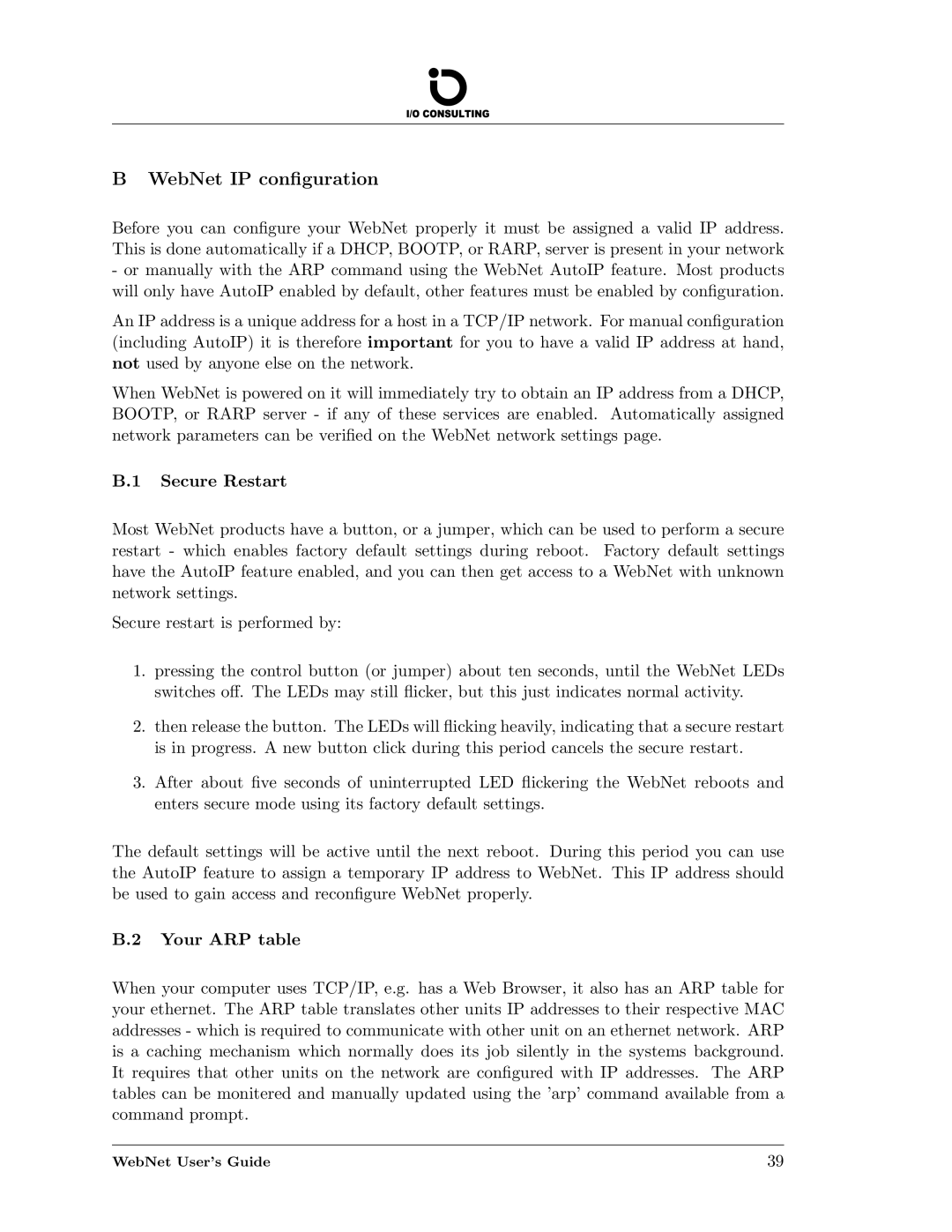
BWebNet IP configuration
Before you can configure your WebNet properly it must be assigned a valid IP address. This is done automatically if a DHCP, BOOTP, or RARP, server is present in your network
-or manually with the ARP command using the WebNet AutoIP feature. Most products will only have AutoIP enabled by default, other features must be enabled by configuration.
An IP address is a unique address for a host in a TCP/IP network. For manual configuration (including AutoIP) it is therefore important for you to have a valid IP address at hand, not used by anyone else on the network.
When WebNet is powered on it will immediately try to obtain an IP address from a DHCP, BOOTP, or RARP server - if any of these services are enabled. Automatically assigned network parameters can be verified on the WebNet network settings page.
B.1 Secure Restart
Most WebNet products have a button, or a jumper, which can be used to perform a secure restart - which enables factory default settings during reboot. Factory default settings have the AutoIP feature enabled, and you can then get access to a WebNet with unknown network settings.
Secure restart is performed by:
1.pressing the control button (or jumper) about ten seconds, until the WebNet LEDs switches off. The LEDs may still flicker, but this just indicates normal activity.
2.then release the button. The LEDs will flicking heavily, indicating that a secure restart is in progress. A new button click during this period cancels the secure restart.
3.After about five seconds of uninterrupted LED flickering the WebNet reboots and enters secure mode using its factory default settings.
The default settings will be active until the next reboot. During this period you can use the AutoIP feature to assign a temporary IP address to WebNet. This IP address should be used to gain access and reconfigure WebNet properly.
B.2 Your ARP table
When your computer uses TCP/IP, e.g. has a Web Browser, it also has an ARP table for your ethernet. The ARP table translates other units IP addresses to their respective MAC addresses - which is required to communicate with other unit on an ethernet network. ARP is a caching mechanism which normally does its job silently in the systems background. It requires that other units on the network are configured with IP addresses. The ARP tables can be monitered and manually updated using the ’arp’ command available from a command prompt.
WebNet User’s Guide | 39 |
